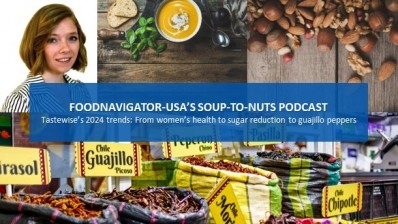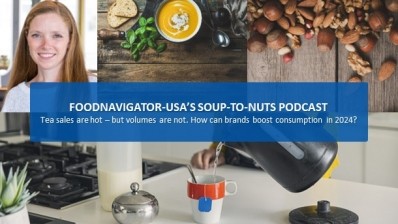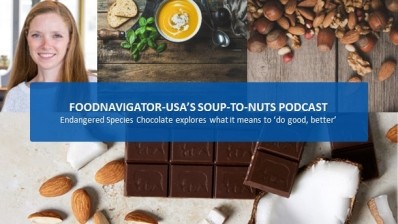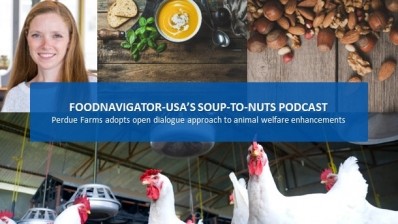Soup-To-Nuts Podcast: Snacking increases but innovation needed for long-term growth
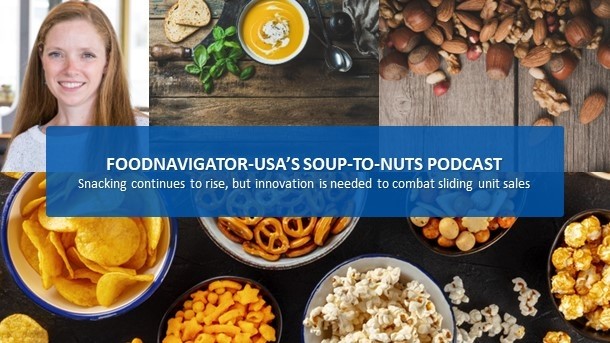
At the same time though, innovation in the space has declined as snack makers managed supply chain challenges and economic headwinds – creating a disconnect between supply and demand that could cost brands sales, market share and consumer loyalty if left unaddressed.
In this episode of FoodNavigator-USA’s Soup-To-Nuts podcast, Circana Vice President and Practice Leader Sally Lyons Wyatt shares how snacking in the US continues to evolve and grow, including what is driving the increase in consumption, who is leading the charge, what they are reaching for and where they are buying snacks. She also shares where she sees opportunities and strategies for stakeholders to drive additional revenue and consumer engagement.
[Editor’s note: Never miss an episode of FoodNavigator-USA’s Soup-To-Nuts podcast – subscribe today.]
Snacking frequency increases, driven by younger consumers
Snacking is not a new concept, but as Lyons Wyatt notes how often consumers snack, what they reach for and when is changing – and many of those shifts are being driven not just by lifestyle but also life stage.
“We were getting to a snacking lifestyle several years ago – before COVID. Part of that was being driven at the time by Millennials. Now we see that Gen Z is also opting in to have that. And we are also seeing it is a little more pervasive across generations,” Lyons Wyatt said.
She explained that younger consumers were originally drawn to smaller meals based on nutritionist guidance and those smaller portions morphed into snacks and created a pattern that Millennials took with them as they aged.
During the pandemic, the trend became more pervasive, but Lyons Wyatt admits she thought that as people returned to work the trend would plateau. But, she said, it hasn’t. Rather, this year 45% of consumers reported snacking three or more times a day – which is up over two years.
Consumers’ definition of snack is expanding
What consumers consider “snacks” also is evolving as new occasions and need states emerge, according to Lyons Wyatt, who says she sees two distinct types of snacks arising.
She adds, these two groups will require different approaches to marketing and innovation that will need to take into account not just cravings and taste but also the current economic environment and shifts in where consumers shop.
For example, she said, within more traditional or core snacks, like chips and cookies, tortilla chips dominate with both sales and units growing, thanks in part to a broad selection but also engaging social media and strategic distribution so that they are where consumers are when consumers want them. This includes single serve options at lower price points in the corner store and large multi-packs with lower price per unit economics at club.
Other core snacks that are performing well include cookies, donuts – especially in the center store, frozen ice milk desserts and sugarless gum and mints.
This shows that indulgence remains a key driver for core snacks.
Tighter economy demands strategic price-pack architecture
Lyons Wyatt also hypothesized that indulgent snacks may be doing well because people consider them “affordable luxuries,” – an assessment that underscores both the opportunity and challenge for the category in the current economy.
On one side, if snacks are priced and placed appropriately they could appeal to consumers who wouldn’t normally buy them but are looking for less expensive alternatives to eating out or more expensive. But on the other side, they aren’t essential for many shoppers and as such aren’t consistently making the cut as consumers pare back their carts to stretch food budgets.
Lyons Wyatt explains that overall volumes for core snacks are down 2% and extended snacks are down 3.5% in units, with some categories suffering more than others.
“Some of the categories have taken a hit are dried meats, snacks, snack nuts, ice cream, even think even categories like crackers, and chocolate,” she said.
One way to protect against further unit declines is to offer smaller options at a lower entry price as well as bulk options at a lower price point per unit.
Where consumers shop is shifting
Lyons Wyatt also notes the economy is influencing where consumers shop, which in turn is influencing the types and size of snacks to which they are gravitating.
For example, consumers are gravitating to club stores for larger quantities at a lower price point and dollar stores for smaller packs with a lower entry point. Online sales also have ticked up in part because consumers can more easily shop based on price. The convenience channel also has done well as consumers filling up their tank may either impulse purchase a snack or divide the $10 they planned to spend on gas and a snack.
Another headwind potentially challenging snack sales is the expanded use of GLP-1 weight management drugs that help curb unhealth food and beverage cravings. While some retailers have noted altered shopping patterns among consumers who are on these drugs, Lyons Wyatt says it is still too early to tell what the short or long-term impact on food and beverage sales may be. But she suggests it may not be as drastic as some fear.
The time to innovate is now
Between challenges related to the pandemic and the economy, many snack makers have been in survival mode for the past three years – pushing innovation to the back burner. And while this decision may have made sense short-term, Lyons Wyatt says it threatens long-term sales, growth and engagement.
While she says she expects innovation to pick back up in 2024, she adds licensing and co-branding agreements as well as category crossovers and line extensions have helped fill the gap and can keep consumers engaged while R&D reboots.
Companies looking for innovation inspiration should look to the beverage category, which has remained strong despite headwinds, Lyons Wyatt said.
Within beverage she said she sees innovation and demand for protein, energy and a combination of additional “extra” benefits, such as fortification with vitamins and minerals.
Looking forward, Lyons Wyatt advised snack makers that want to drive long term growth to carefully assess their price-pack architecture, assess the occasions and consumers with which their products best resonate and create marketing that communicates to them, and invest in innovation.
